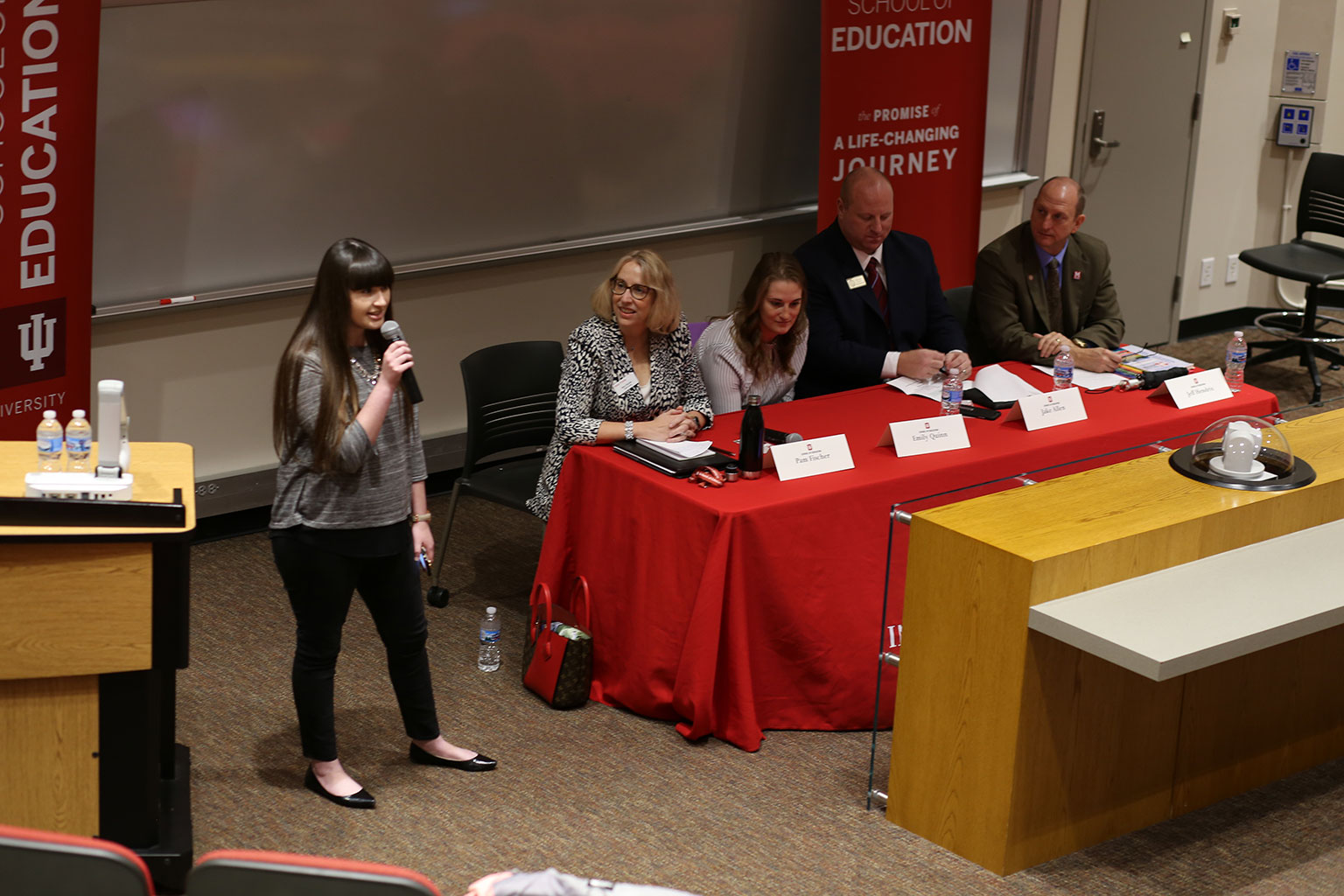School of Education student Casey Hennings didn’t have any expectations when she approached Dean Lemuel Watson with an idea. Hennings saw a gap in her training when it came to safety in the classroom and spoke to Watson about organizing an event that addressed that concern. The Role of the Teacher in School Safety, a day of events in honor of nationally-recognized Safe Schools Week, was the result of Hennings’s suggestion.
The day started out with an alumni panel discussing how safety affected the way they taught. Jake Allen, Assistant Superintendent of Mooresville Schools, said when he started teaching fifteen years ago, he thought his number one priority would be teaching his students English.
“What I tell students now, your number one goal is to keep your students safe. You have to keep that at the forefront,” he said. “Sadly, for some of those students, the classroom is the safest place they will be all day long.”
Pam Fischer is in her 31st year of teaching. She now works at Park Tudor School. At the beginning of her career, she didn’t understand why students would already be in the building at 6 a.m. even though classes didn’t start until 8. She echoed Allen’s sentiment that for many, school is a safer place than home.
“Students trust us. We are their parents during the day. We have to take that very seriously,” she said. “The number one thing is I have to project a calm demeanor. Not only are you ensuring your students feel safe physically, you have to make sure your students feel safe mentally.”
While active shooter drills are certainly something on the forefront of everyone’s minds, all four alumni emphasized the day-to-day safety efforts their schools are implementing, especially around student and staff mental health. Jeff Hendrix, superintendent for School Town of Munster, wants to invest in more therapists and counselors in his school. One idea he is not in favor of, however, is arming his teachers.
“Your job is to teach kids, not stand guard over them with guns. You’re hired to educate kids,” he said.
Emily Quinn is in her second year of teaching fifth grade language arts and social studies within Avon Community School Corporation. Her school focuses on building a rapport with all students, not just the ones in their individual classrooms.
“When you do that, you can tell if a student is having an off day,” she pointed out. “All of our teachers are very comfortable going up to students who we don’t have and asking how is your day.”
Larry Perkinson, the Employee and Student Assistance Coordinator for Bartholomew Consolidated School Corporation in Columbus, spoke in the afternoon about how relationships were the cornerstone of school safety. Perkinson has 44 years of experience in education, 23 of those in his current role. He fields calls every day for issues ranging from not enough food for a student’s family to responding to rumors of threats to students. Perkinson said when emotions get out of control, it doesn’t make any difference what facts he has.
“You simply have to listen and calm people down,” he said. “We all need to build relationships because that’s how we help people. That’s how we heal people, too.”
The final event of the day was a presentation from faculty members David Estell and Heather Ormiston with the School Psychology program. Estell and Ormiston discussed bullying and warning signs in students, though they were quick to point out those warning signs should not be used as a checklist. Ormiston worked as a school psychologist and acknowledged the role teachers play in identifying students that may need a one-on-one conversation.
“There are so many other factors that come into play when it comes to students,” she said. “What is it we as a school system we can do or we as a school to alleviate some of the stress? In a school system, there are so many supports that we hopefully have in place.”
It is that message of support – teachers to their students, peers and staff at their schools – that School of Education students will hopefully take forward into their own teaching careers.
Funding for the activities was made possible through support from John and Kate Ranshaw.


